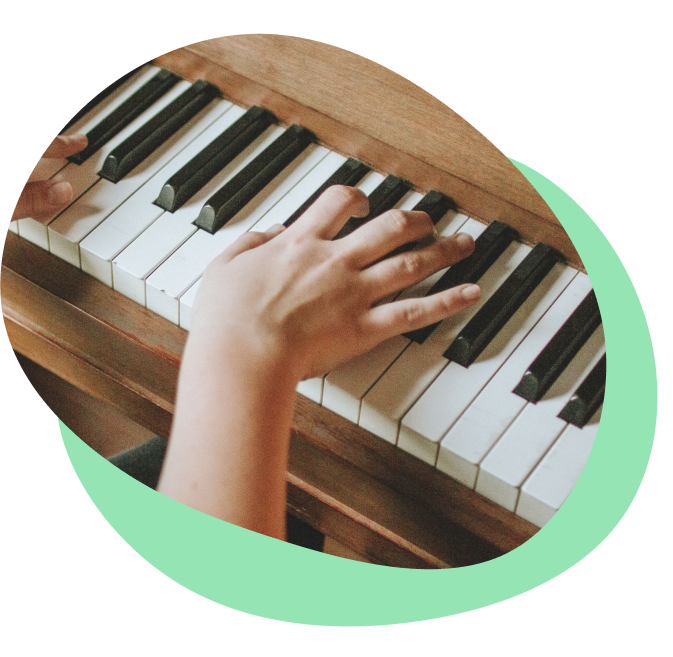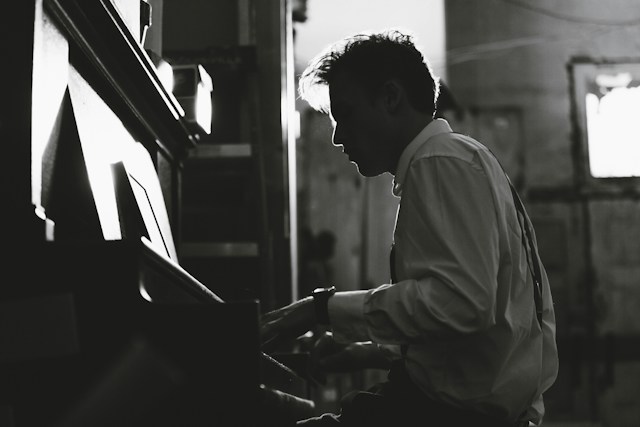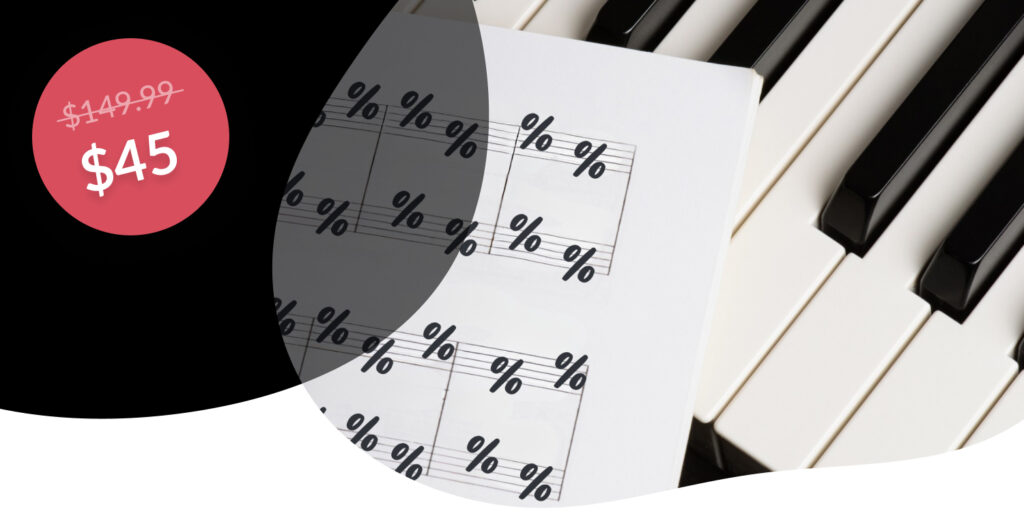What is a suspended chord? Suspended chords in music are a fascinating and unique element within harmony. Suspended chords are great at introducing anticipation and unresolved tension. They can add distinct color and emotional depth to musical compositions. At their core, suspended chords are about temporarily delaying the expected harmonic resolution or movement. This is typically achieved by replacing the third of a chord with either a second (sus2) or a fourth (sus4), creating a sound that is neither major or minor but suspended. In this article Skoove will help you understand how to construct and use sus chords in your composition. Let’s get started.
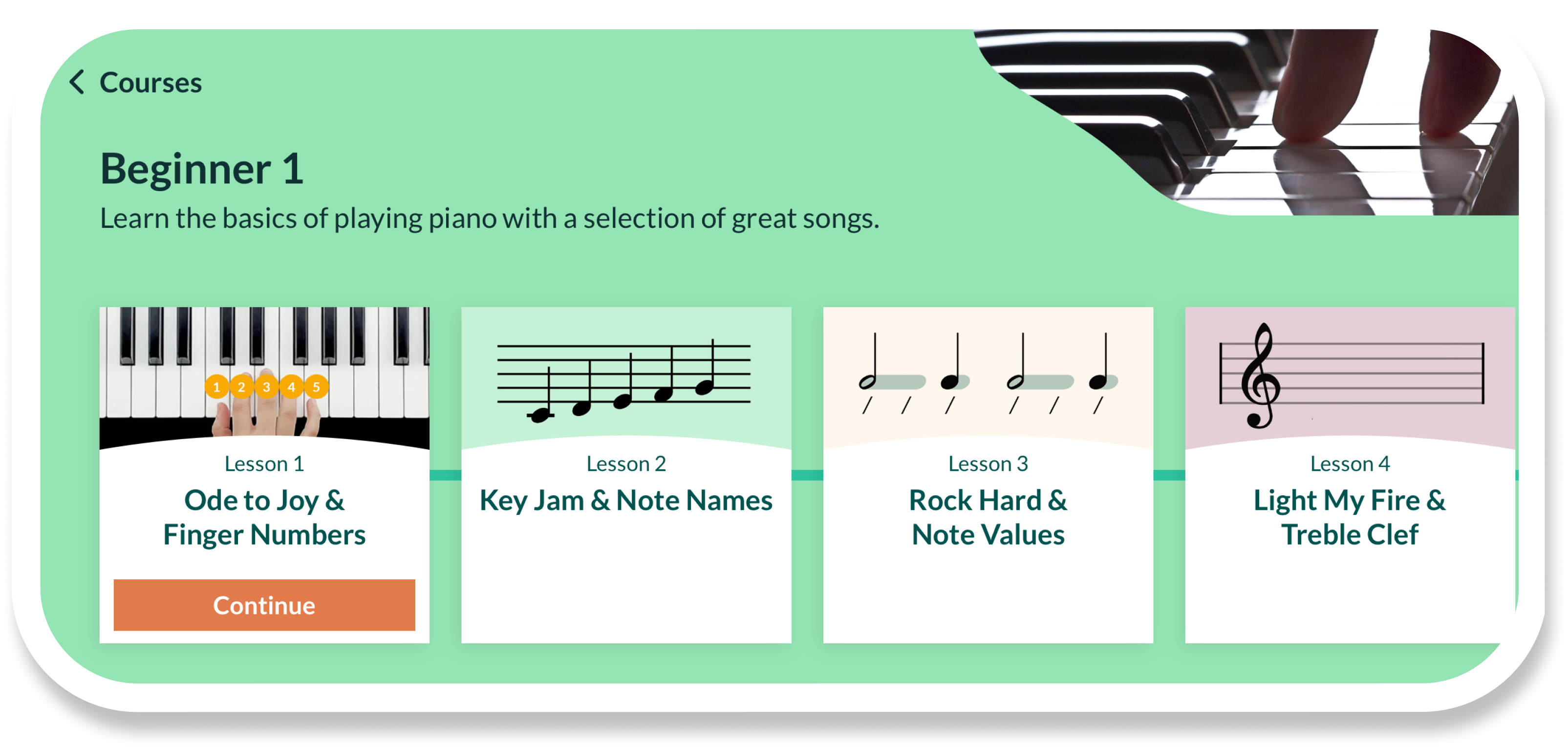
What are suspended chords?
Suspended chords are different from major triads as they do not contain thirds. Sus chords omit the third, replacing them with either a major second or perfect fourth. They are an important part of learning piano as they provide for more variety and interesting movement with chords and scales.
Before we go any further let’s take a look at an E major (E – G# – B) and E minor triad E – G – B and compare them to our two varieties of sus chord. We see here that these major and minor chords consist of a root and a third and a fifth.

When we compare these major and minor triads to the two sus chords we see that these thirds can be replaced by either a major second, making a sus2 chord, or perfect fourth, making a sus4 chord.
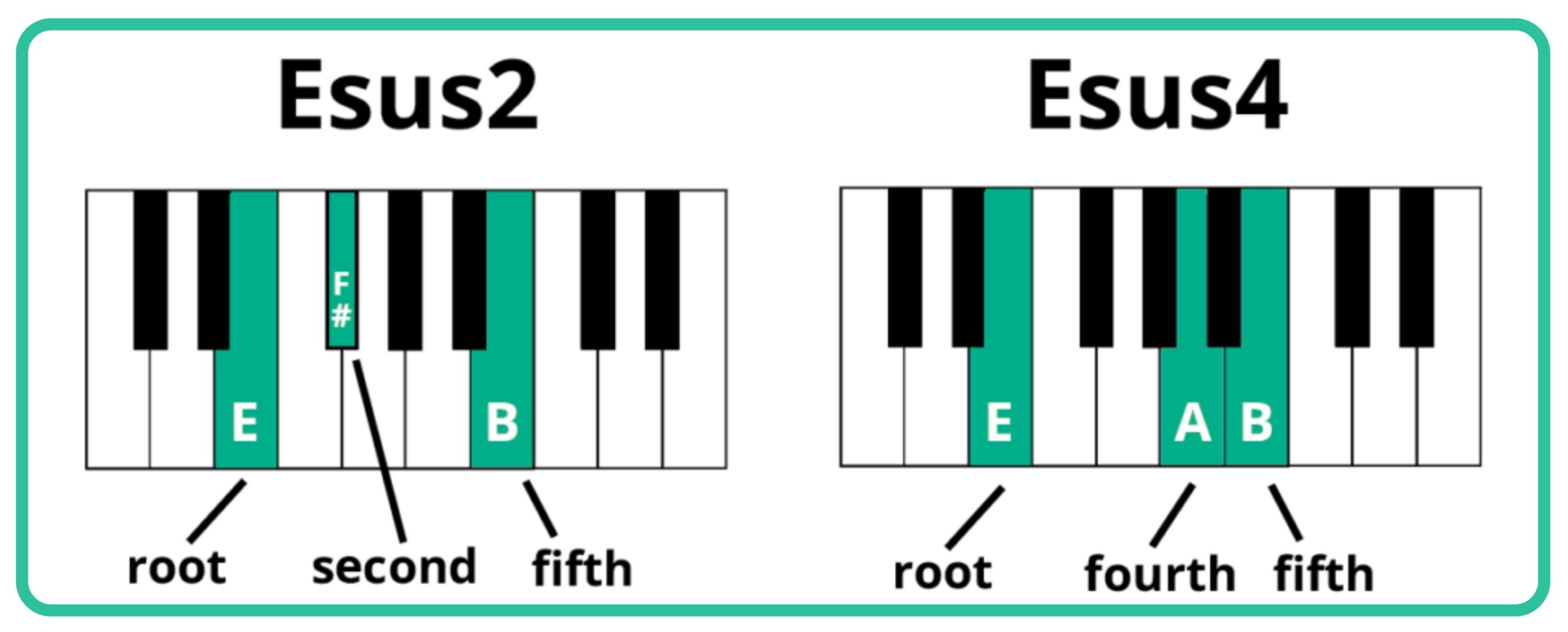
These suspended chords can create tension by this omission of the third note of a chord, which is crucial in determining whether a chord sounds major or minor. By suspending this piano note and replacing it with a second or fourth, the chord creates tension which wants to be resolved.
How to notate sus chords?
As we have seen the two types of suspended chords are notated with a ‘sus’ and a number. This number is the scale degree which you replace the third with. This will either be a 2 or a four depending on whether you are replacing the third with a second or a fourth.
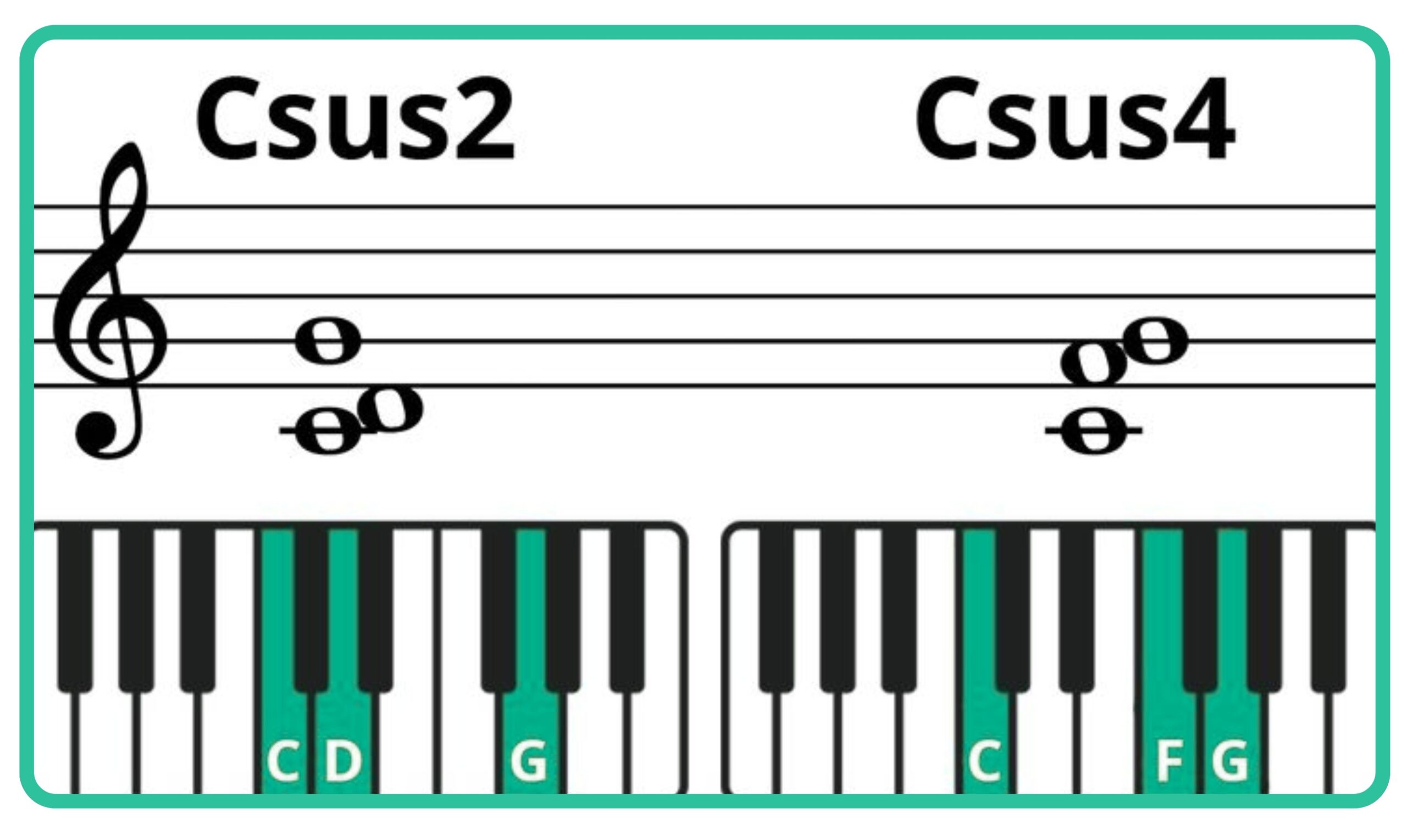
To understand sus chords fully it is helpful to know how to construct these chords in a few ways.
Suspended chord formula
The suspended chord formula follows simple rules. You can create them either using scale degrees or interval construction. Take a look at this handy table to get to grips with some examples.

Now you have seen these examples try making and playing them in some different keys. These sus chords can also be used as part of any 7th or 9th chord that are built on major or minor triads. Try playing around with them and experiment with these new sounds.
How to play suspended chords on piano?
What makes a suspended chord so captivating is the tension and resolution it can create. In a typical chord progression, a suspended chord introduces a sense of unresolved tension. This tension is then typically resolved by resolving to a major or minor chord.
Sus chords can be used on their own, especially in pop and jazz. However, understanding the common classical style three step process of preparation, suspension and resolution is a great way to start playing sus chords. We can see here that we move from an F major chord (preparation) to a C sus 4 (suspension) resolving to a C major (resolution). This held note is what makes a chord suspended and where they get their name.
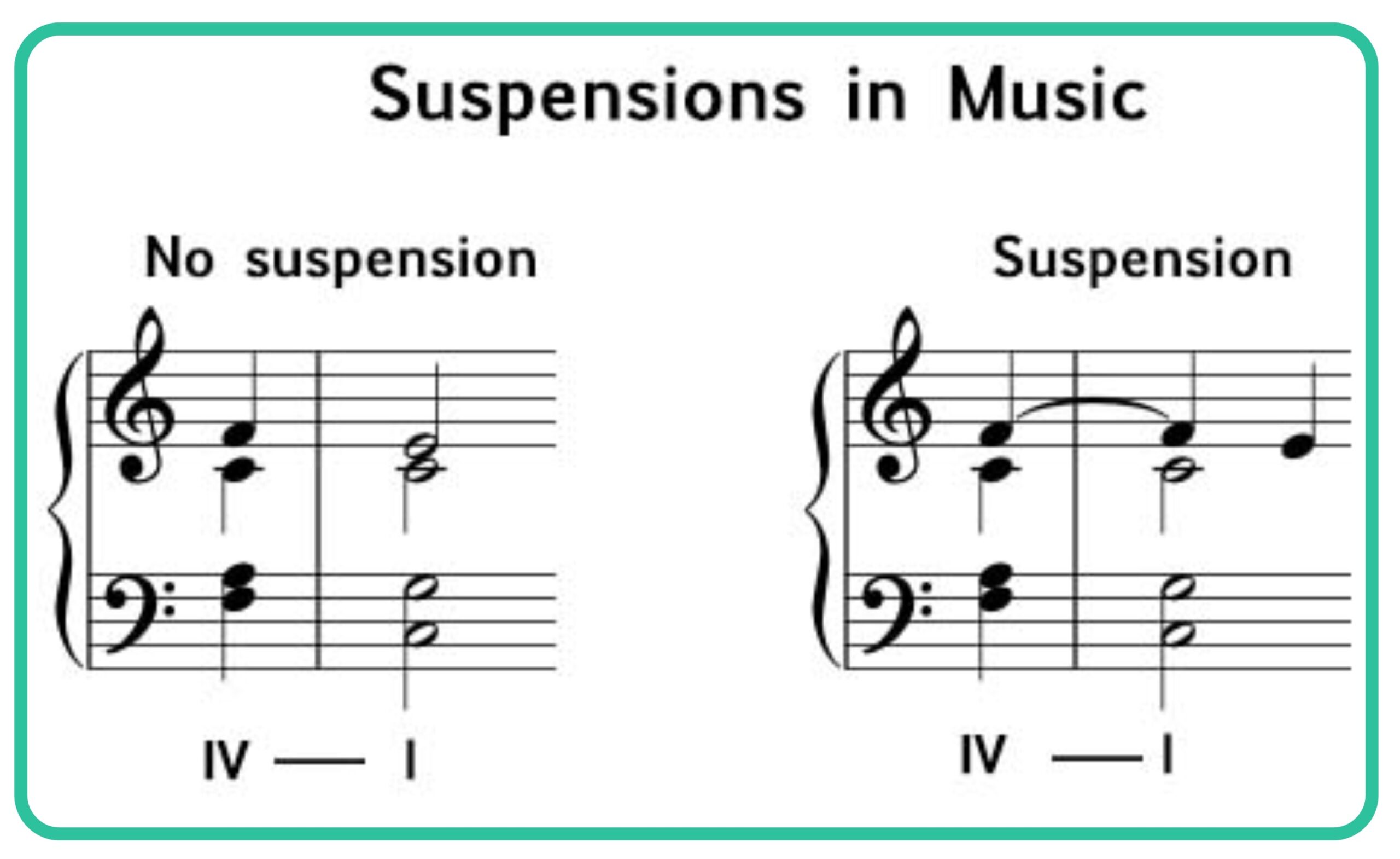
This exercise is a great way to start to incorporate suspended chords into your playing and practice routine. Have a go at playing different suspended chords as bridging chords and see how it affects the voice leading.
Knowing how to use suspended chords involves the art of understanding their voicings. On the piano, for example, playing a C suspended chord or a G suspended chord requires a specific finger placement that differs from standard triads. Beginners, using tools like Skoove’s piano learning app, can benefit from visual guides and exercises designed to familiarize them with these placements.
How to use suspended chords in music?
In classical music
In classical music, suspended chords have long been used to evoke a range of emotions, from gentle longing to dramatic tension. Composers like Bach and Mozart skillfully incorporated the suspended chords into their compositions, using them as a bridge to lead the listener from one emotional state to another.
In jazz music
Jazz musicians and modern composers have taken the use of suspended chords to new heights. In jazz, the suspended chord formula often includes complex variations like the suspended chord with an added seventh or ninth. These chords, such as a C suspended chord with an added seventh, provide a sophisticated sound that has become a hallmark of the genre.
The artistic impact of suspended chords
Suspended chords, with their unique blend of tension and resolution, play a crucial role in music composition and performance. They are not just theoretical concepts, but practical tools that musicians can use to add emotional depth and variety to their compositions.
The true value of suspended chords lies in their ability to enhance your creative palette. They offer a way to experiment with sound, create tension and resolution and contribute to a more dynamic and engaging musical experience. If you need a little more support the Skoove app can help you get to grips with suspended chords in no time. Happy practicing!
Author of this blog post:
Susana Pérez Posada

With over seven years in piano education and a deep passion for music therapy, Susana brings a unique blend of expertise to Skoove. A graduate in Music Therapy from SRH Hochschule Heidelberg and an experienced classical pianist from Universidad EAFIT, she infuses her teaching with a holistic approach that transcends traditional piano lessons. In her writings for Skoove, Susana combines her rich musical knowledge with engaging storytelling, enriching the learning experience for pianists of all levels. Away from the piano, she loves exploring new places and immersing herself in a good book, believing these diverse experiences enhance her creative teaching style.
Edited and fact checked by Eddie Bond, multi-instrumentalist performer, composer, and music instructor
Published by Lidya Hovan from the Skoove team




